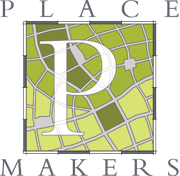A Placemaking Journal
The Resilience Built In: What Porchfest teaches us about place
There’s a lot to love about Porchfest, the increasingly popular, oversized block party experience where porches become performance stages and lawns become venues. The music, the neighboring, the strange but welcome sense of permission to wander across a stranger’s lawn and linger on their grass, just to listen. But the real magic, the part that defies replication, comes from something far more foundational: the setting.
The Oakhurst Porchfest, which I, together with two co-conspirators, launched in Decatur, Georgia, back in 2015, is often described as a grassroots music festival. But that undersells it. What it really is — or can be, when the ingredients are right — is an emergent demonstration of community in action. Not the theoretical kind. The lived-in, who-has-an-electric-drill-I-can-borrow kind. And more often than not, what makes it work isn’t just the people, but the design of the place itself.
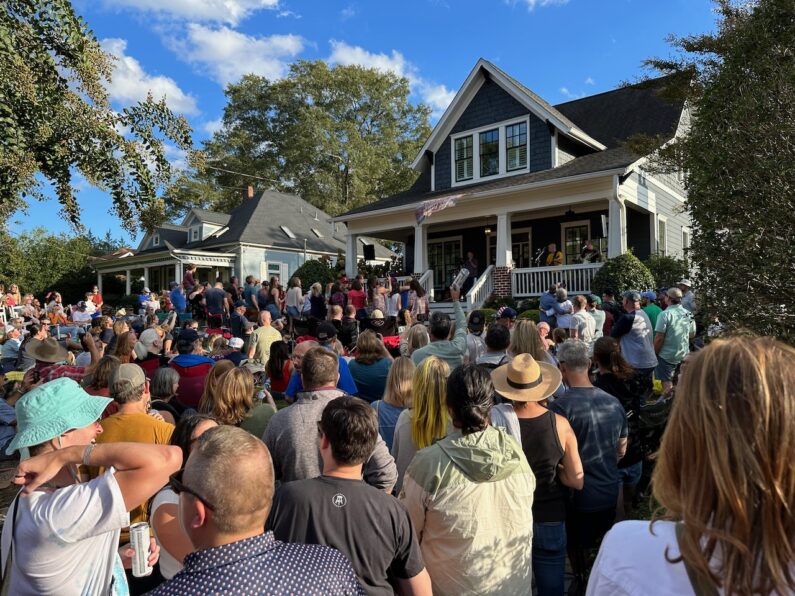
Why Traditional Neighborhoods Matter
Like the roughly 235 other Porchfests that have sprung up across North America over the past two decades, we didn’t invent the concept. That credit goes to Ithaca, New York, where the idea first emerged in 2007. But we did shape it to our particular context: a compact, walkable southern neighborhood where porches, sidewalks, and shade trees frame the day-to-day experience of those who live here. The result? A community event that requires almost no infrastructure, no stages, no tickets, no fences, and no beer tents. Just people using what they already have and inviting others to share in it.
That only works because of the neighborhood.
Traditional neighborhoods, whether historic or newly built to embody historic patterns, are uniquely suited to this kind of thing. Their DNA is social. Smaller blocks. Connected streets. Front porches near the sidewalk. A mix of homes, stores, restaurants, schools, and parks close enough to make cars optional. These aren’t just aesthetic choices. They’re structural investments in community.
The Limits of Auto-Oriented Development
Contrast that with the more dispersed, auto-oriented development that defines so much of America. In those places, porches and sidewalks are the exception, and the distance between destinations is measured not in footsteps but in fuel consumption. It’s a landscape of privacy and separation. And while that offers a certain level of appeal I can absolutely relate to in terms of quiet or personal space, it also makes spontaneous community — the kind that spills out into the street and improvises joy with borrowed amps and folding chairs — a lot harder to pull off.
Which brings us to the bigger picture.
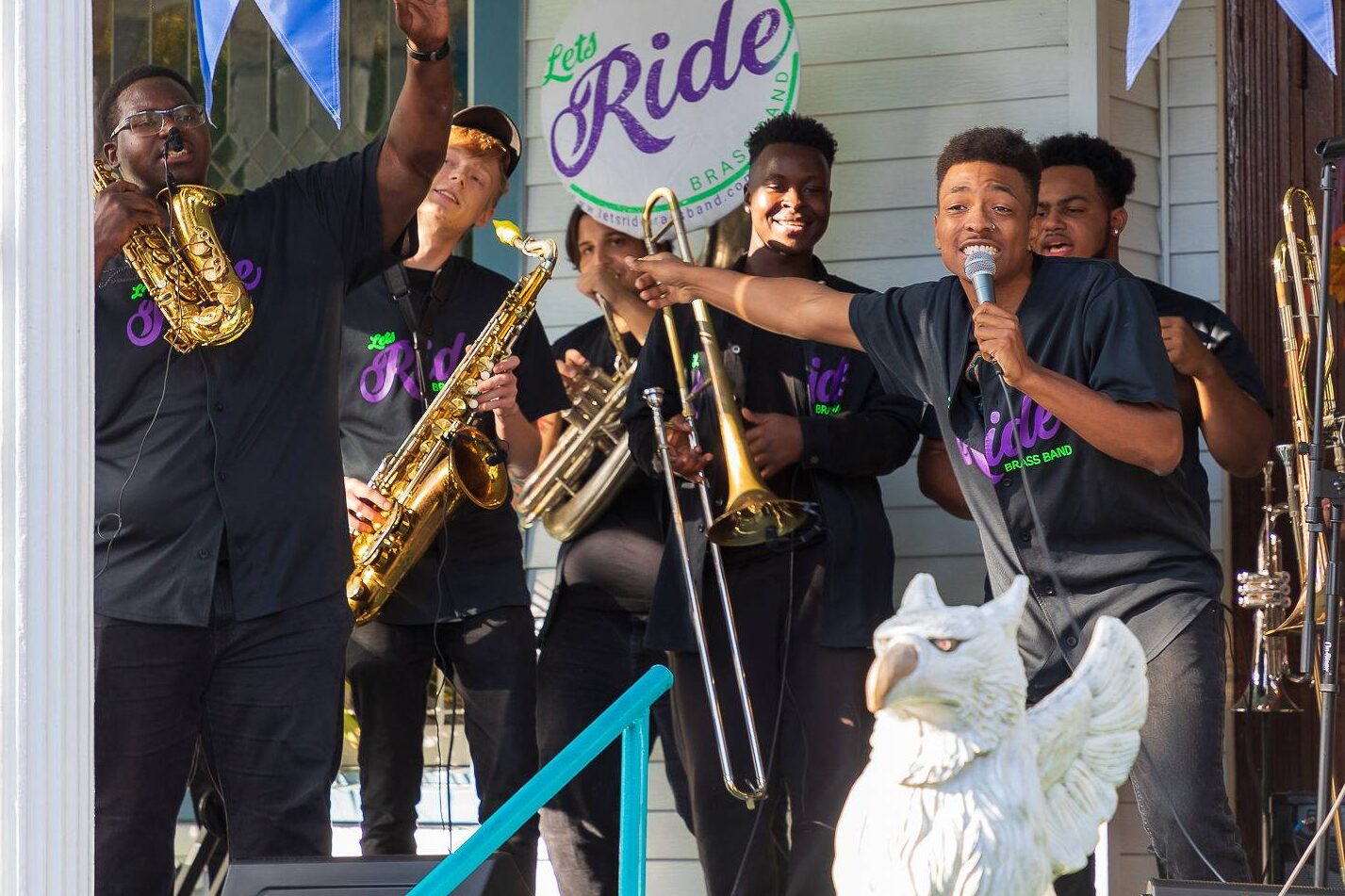
Community as a Resilience Strategy
We live in a time increasingly defined by uncertainty. Whether it’s public health, extreme weather, economic turbulence, political polarization, or the slow churn of cultural disconnection, the cracks in our systems grow more visible by the day. And as that happens, more and more people are reminded of what it takes to survive in times of turbulence: resilience.
Resilience is, at its core, the ability to adapt and recover. To keep on keepin’ on. To bounce back, sure, but more importantly, to bounce forward. And while we often talk about resilience in terms of emergency preparedness or infrastructure investment, there’s another layer. A softer, but arguably more essential one: social capital.
The truth is, in times of disruption, your greatest resource isn’t your generator. It’s your neighbor.
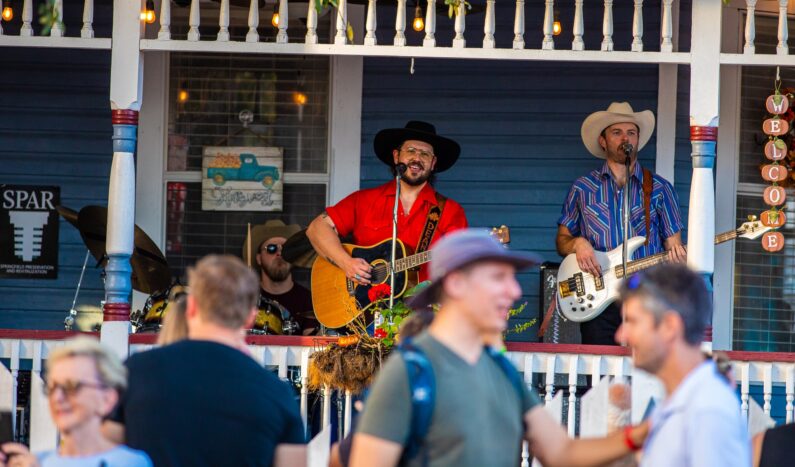
Porchfest as a Civic Litmus Test
That’s what makes events like Porchfest more than just fun. They’re resilience drills. They reveal the latent capacity of a place to self-organize, to connect across differences, to generate trust without bureaucracy. And they do it using the most basic of ingredients: proximity, purpose, and a shared sense of stewardship.
Unfortunately, that’s tough to do in a landscape of cul-de-sacs, where collector roads lead to arterial retail pads floating in oceans of parking. You can do a lot of things in those places, but cultivating a robust civic life isn’t typically one of them. At least not easily.
Traditional urban form makes it easier. It invites participation. It lowers the barrier to entry. It allows someone to hear a band a block away and just wander over. It creates the conditions where spontaneous interaction isn’t the exception but the expectation.
And that matters.
Not just for festivals, but for real life. When the power goes out. When the flood comes. When the institutions we rely on falter or fail. The ability of a neighborhood to pull together and respond doesn’t come from a memo. It comes from accumulated trust. From familiarity. From the simple fact that people know each other’s names and know they can knock on a door if they need help.
That kind of community isn’t nostalgia. It’s infrastructure.
It doesn’t show up in a capital improvements budget, but its value is immense. And like all infrastructure, it can be planned for. We can design for it. We can build places that prioritize people over throughput, and connection over convenience.
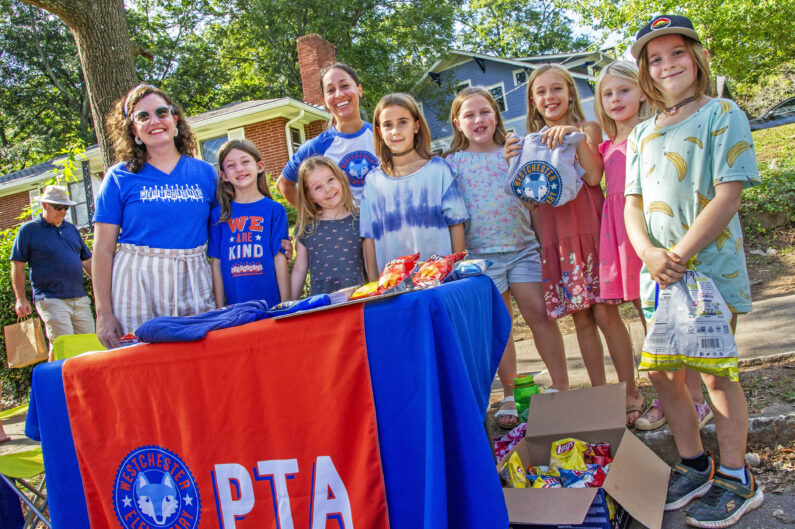
Retrofitting Connection in Modern Sprawl
We can also retrofit. Even in our more disconnected suburban landscapes, we can chip away at the barriers to belonging. Add sidewalks. Encourage ADUs. Convert traffic lanes into public space. Reclaim the middle ground between complete isolation and overstimulating spectacle.
But most importantly, we can recognize that how we design our communities says something about what we believe people need. If we believe in autonomy above all else, we’ll keep building environments that isolate and insulate. But if we believe that humans are, by nature, social, interdependent creatures — that our wellbeing is tied to the strength of our relationships — then our built environment should reflect that.

The Invitation is the Infrastructure
Porchfest is fun. But it’s also a window into something deeper. A signal that, under the right conditions, people will show up for each other. That given even the gentlest of invitations, they’ll open their homes, offer their talents, and co-create something beautiful.
We just have to give them a place that lets them.
That’s the part that sticks with me. Long after the amps are packed up and the last folding chair has been stowed away, what remains is the sense that the community was always there. Porchfest didn’t create it. It just gave it permission to emerge.
We need more of that. Not just once a year, but every day. Every damn day.
— Scott Doyon




